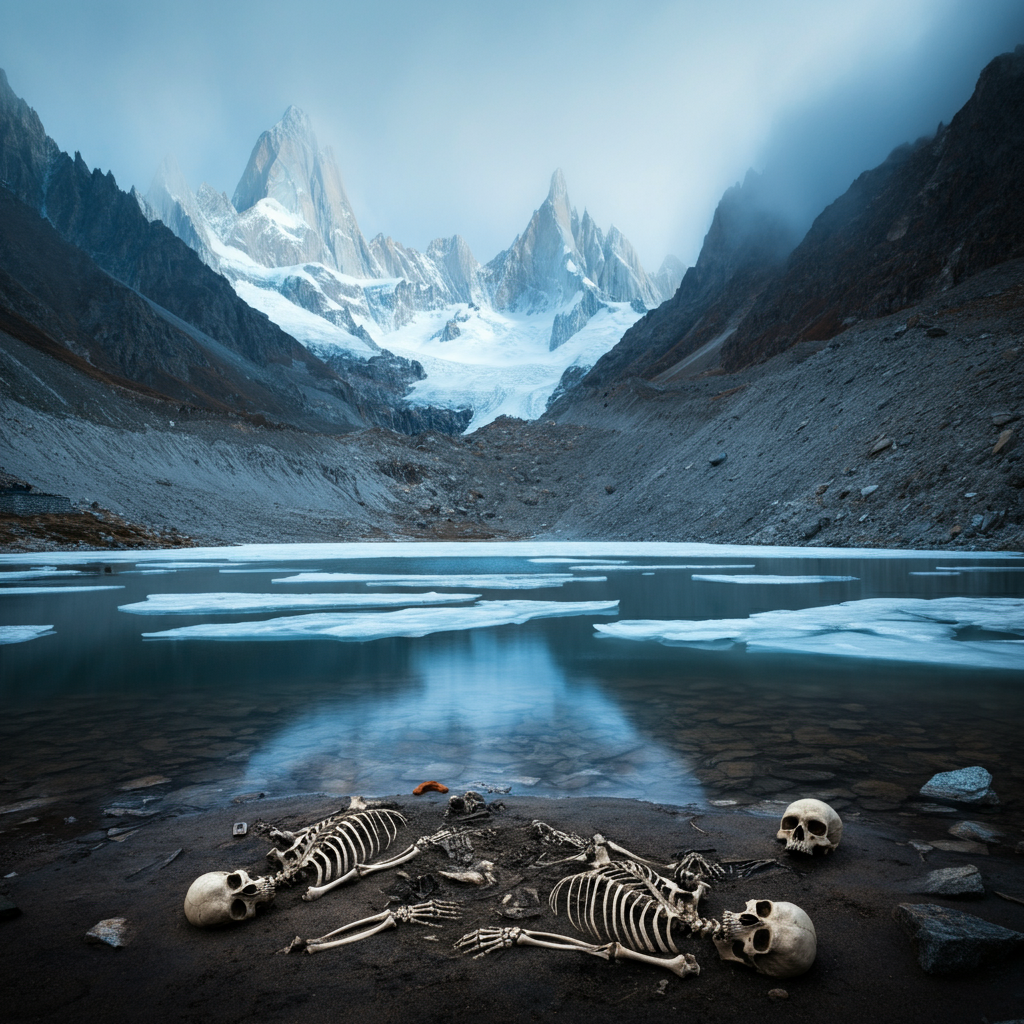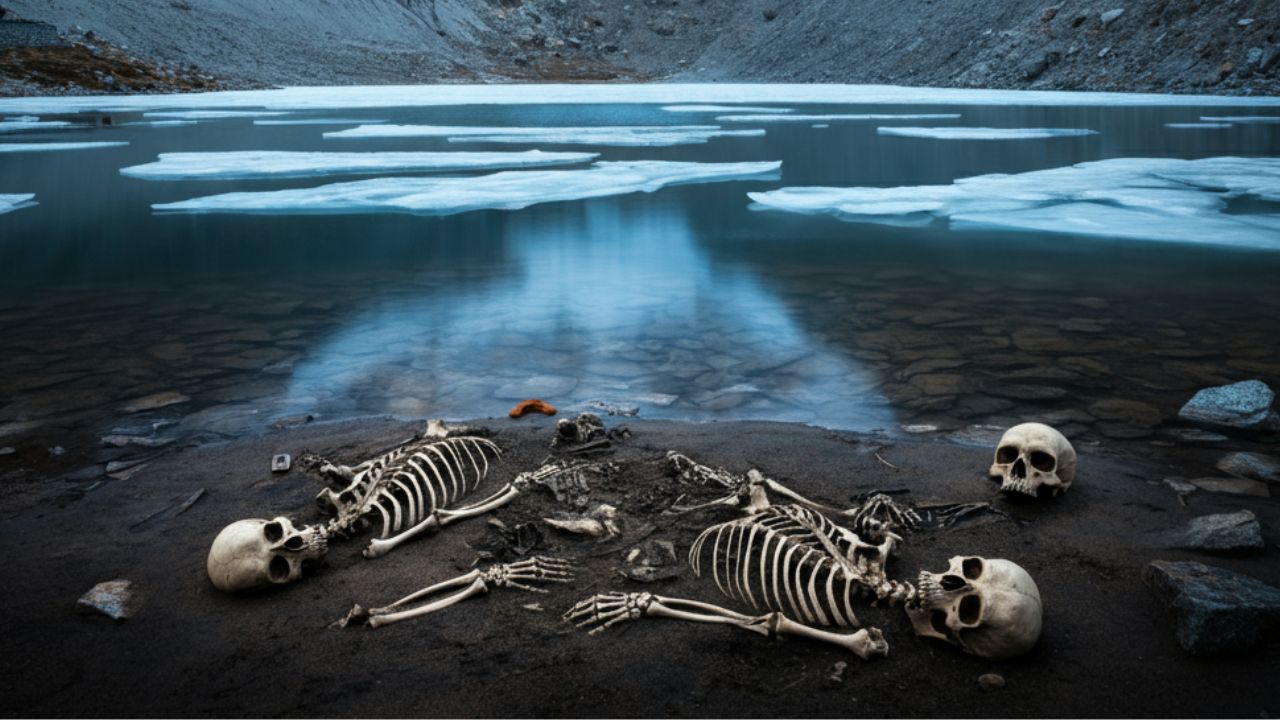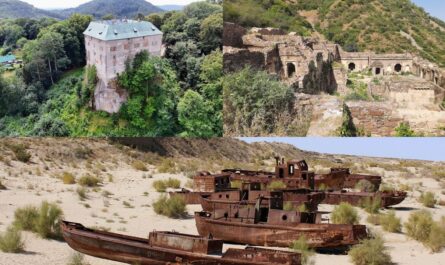Roopkund Lake Mystery: Discover the Skeletons of India’s Skeleton Lake
You must have heard about many lakes that are famous for one reason or another, but today we will learn about a lake that is called Skeleton Lake. Yes, a lake where skeletons are found. This lake has many things and mysteries that have not been understood so far. And the name of this lake is Roopkund Lake.
This lake is situated in the Himalayas and is surrounded by the Trishul mountain range. It is located about 16,470 feet above sea level/ground level. There is some story behind this lake, due to which many human skeletons are found in its clear water. Many scientists and historians have been researching this topic for a long time. But what is the mystery behind this sight? In this blog, we will talk about the mysteries, science, and cultural attraction of Roopkund, and uncover its many stories.

Why Does Roopkund Lake Attract People?
For trekking enthusiasts, Roopkund is a dream destination, despite its remote location and the difficulties one might face in reaching there. However, on the way to the lake, you will experience many beautiful places, such as snow-covered peaks like Trishul and Nanda Ghunti, and the breathtaking alpine meadows like Bedni Bugyal.
Despite the many stories about this lake, people still prefer to visit it and try to figure out what makes it so intriguing. But going to a place where skeletons are found raises many questions in our minds, questions that may never have an answer.
The Allure and Challenges of Roopkund Trekking
The location of Roopkund, surrounded by the towering peaks of Trishul and Nanda Ghunti, makes it a magnet for trekkers seeking an unforgettable adventure. The nearby Bedni Bugyal meadow is not just a resting spot for hikers but also a culturally significant site, hosting events like the Nanda Devi Raj Jat festival.
However, trekkers must prepare for challenging terrain, unpredictable weather, and unexpected events. For many, though, the trip to Roopkund is as much about uncovering the mystery as it is about reaching the lake itself.
What Changed Roopkund Lake Over Time?
The dimensions of Roopkund Lake change throughout the year. Typically, its diameter is only 40 meters. Seasonal ice and weather conditions alter its shape. For trekkers and researchers, the best time to visit Roopkund is between autumn (September and October), when the lake is in its pristine form, and the surrounding environment is pleasant and favorable.
The Skeletons of Roopkund Lake
When the mysteries of this lake were being explored, many scientists believed that it could have been the site of a fatal incident where many people perished, and as a result, their skeletons remain there. However, as the investigation progressed, they discovered three distinct groups of skeletons, with some dating back to 800 CE and others from 1800 CE, which made the research even more intriguing.
Upon closer examination of the skeletons, it was found that most of the individuals had deep head injuries, indicating that these injuries were caused by hailstones. Some of the skeletons even retained flesh, a surprising feature that hints at centuries-old preservation processes. But the question remains, was there an accident, or is there something else that hasn’t been revealed yet? The sudden deaths of so many people might still be an unsolved truth.
In addition to the skeletons, other items like iron spearheads, wooden objects, and artifacts from ancient times were also found.
Folklore Meets Fact
The Legend of the King of Kanauj:
One local story passed down through generations tells of a tragic pilgrimage led by King Raja Jasdhaval of Kanauj, accompanied by his pregnant wife, Rani Balampa, servants, and dancers. According to the legend, the group angered the goddess Nanda Devi during the pilgrimage by their irreverent behavior. In retaliation, the goddess sent a hailstorm so violent that it wiped out the entire group near Roopkund Lake.
The fractures found on the skulls of the skeletons strongly align with this tale. For years, many believed the hailstones were the size of cricket balls, delivering fatal blows to those caught in the storm.
Protecting Roopkund Lake for Future Generations
The local people have taken steps to protect the lake. There have also been reports of some tourists taking bones as souvenirs, but why and for what purpose is still unknown. Due to this, local residents are calling for greater protection of the lake, ensuring that it remains accessible for future generations.
Also Read: Kumari Kandam: The History and Mystery of Tamil Identity
हिन्दी मैं पढे : रूपकुंड झील(Roopkund Lake) रहस्य: भारत का कंकाल झील
For More Updates Please Join :FaceBook




2 thoughts on “Roopkund Lake Mystery: India’s Skeleton Lake”